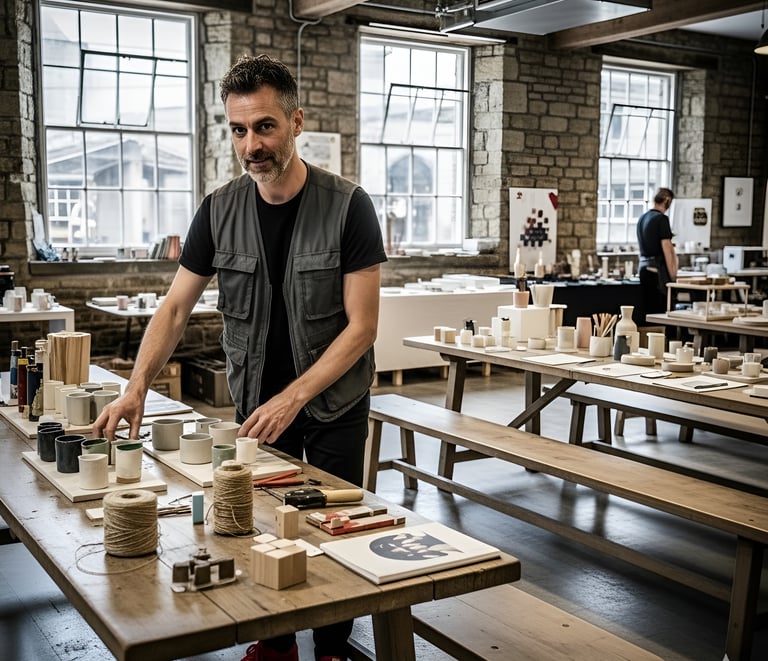You need more of the right people to say yes.
Not once. Repeatedly.
We help you redesign how yes happens across your team, so it is easier for customers to decide, and easier for your people to sell, support and renew.
We call that work your Yes Architecture.
Your Yes Architecture
Under the hood, every yes runs through four parts. Most teams only see the surface.
We look at:
Price
How your numbers, tiers and trade offs signal value and steer decisions.
Story
The words and proof your team use to show why this is worth saying yes to.
Journey
What it feels like to go from first contact to first result. Where people get excited, confused or lost.
Renewal
The moments where people decide to stay, expand or leave.
We work on these four areas in three practical ways:
Yes Scan: find the real friction first
Yes Sprint: fix one yes problem fast
Yes Architecture: make yes part of how you operate
In every piece of work we involve both:
the people who set the yes
the people who deliver the yes
So decisions about price, story, journeys and renewal are all connected up.
Most teams start with a Yes Scan, then move into Yes Sprints.
A 30 minute call to map what yes looks like in your world and see which option fits.
Which sounds most like you right now?
Before we get into the detail, sanity check where you are.
"We know something is off, but no one agrees on why"
Your numbers are under pressure and every function has a different theory.
Product points to pricing.
Sales points to product.
CS points to "expectations".
"We know the hotspot. We need it fixed quickly"
Pricing, trial to paid, renewals or sales story are clearly the issue.
Everyone is nodding at the same problem. No one has had the space to fix it properly.
You probably need a Yes Sprint.
"We have lots of hotspots and want a joined up plan"
You are done with isolated fixes.
You want yes to be designed into pricing, sales, product and CS, not glued on as an afterthought.
You probably need a Yes Architecture programme.
If you are unsure, that is fine. The Yes Intro call is where we work that out together.
Yes Scan
Find the friction first
You cannot fix what you cannot see.
The Yes Scan gives you a clear picture of how yes really works in your organisation, where it is breaking, and what to do first.
When to use a Yes Scan
A Yes Scan is right for you if:
you know conversion, adoption or renewal are not where they should be
different teams have different stories about what is going wrong
you are tired of opinions and want one shared, evidence based picture
you want to choose your first move with confidence, not guesswork
Most teams start here.
What happens in a Yes Scan
A Yes Scan usually runs over 2 to 3 weeks and looks like this:
1. Kick off with your core team
We clarify what yes means for you, what is on the table, and what success would look like.
2. Short, focused interviews across functions
We speak with people in product, sales, marketing, CS and operations.
We want to see how decisions are really made, not just what is written in a docs.
3. Review of key journeys, pricing and stories
We look at your pricing, sales material, onboarding and renewal paths, plus any data you have on behaviour and performance. We use this to spot patterns.
4. Map your Yes Architecture
We turn what we have seen into a simple map across price, story, journey and renewal, highlighting where yes is slowing, slipping or breaking.
5. Playback and prioritisation session
We walk your core team through the findings, agree the top 3 to 5 opportunities, and recommend where a Yes Sprint will do the most good.
What you get
By the end of a Yes Scan you have:
a clear, shared picture of how yes works in your organisation today
a short list of specific friction points that are worth fixing now
a practical recommendation for your first Yes Sprint
a concise written summary you can share with leadership and teams
"Yesology cut through the noise and gave us actions we could use straight away."
Arvind Satyam, Chief Commercial Officer, Pano AI
Next step
If this sounds close to your world, your next move is a Yes Intro call.
Yes Sprint
Fix one thing blocking yes
A Yes Sprint is a 2 to 4 week block where we work with your team to redesign one high value part of your Yes Architecture.
When to use a Yes Sprint
A Yes Sprint is right for you if:
you can point to a specific problem such as:
pricing and tier structure
value story for sales and CS
trial, demo or onboarding journey
renewal and expansion conversations
you need change in weeks, not quarters
you want finished artefacts that your team can use, not just ideas
You can run Sprints one at a time, or as part of a wider Yes Architecture programme.
What happens in a Yes Sprint
Every Sprint follows the same simple pattern.
The content changes. The structure does not.
Align
We start by agreeing the problem in plain language, the boundaries, and how we will know the Sprint has been worth it.
Map
Together, we map the current yes path in that area.
For example:
how pricing is discussed and changed
how prospects move from first contact to committed customer
how renewal conversations currently happen
This often surfaces unspoken rules and workarounds that cause friction.
The "we have always done it this way" ghosts.
Design
We co design new structures, scripts, flows or frames with your team.
We bring the psychology and patterns, your people bring context and constraints.
Equip
We turn decisions into concrete tools such as:
new or refined tier structures and price guidelines
clear value stories and talk tracks for sales and CS
updated journeys, email flows or in product prompts
renewal playbooks keyed to different customer types
Test and tune
Where possible you test quickly in live conversations or small segments.
We adjust based on what you learn.
Example Yes Sprints
Pricing Sprint
One clear pricing system, agreed by leadership and usable by sales and CS.
Less haggling, more confident conversations.
Story Sprint
A single, simple value story with proof that everyone can tell, from the newest salesperson to senior leadership.
Journey Sprint
A trial, demo or onboarding path that moves people to a meaningful first result faster.
Renewal Sprint
Renewal and expansion playbooks that shift the focus from price to outcomes and progress.
What you get
By the end of a Yes Sprint you have:
a fixed and improved yes path for one specific area
finished artefacts your team can put to work immediately
clear guidance on how to roll the change out further
a better sense of what to tackle in your next Sprint
Who is in the room
A Sprint usually involves:
people who set the yes
people who deliver the yes
That mix is what turns decisions into things your team can actually use.
"The impact was immediate. We closed a project at 2 to 3 times higher just one week after."
Clarke Ching, Author
Next step
If you already know your hotspot, a Yes Sprint is likely the right move.
If you are not sure, start with a Yes Scan.
Either way, the first step is the same.
Yes Architecture
Make yes part of how you operate
You can get good results from a single Sprint.
To change how yes works across your business, you need a joined up plan.
A Yes Architecture programme is a series of Scans and Sprints that bring price, story, journey and renewal into line, and build capability in your team as you go.
When to invest in Yes Architecture
A Yes Architecture programme is right for you if:
you are responsible for a number and a team, not just a single project
you have several yes hotspots and do not want to treat them as separate problems
you want a consistent language about yes across product, marketing, sales and CS
you want your people to be able to use these tools without external help over time
What happens in a Yes Architecture programme
Every programme is built around your context, but most include:
Initial Yes Scan
To map your current Yes Architecture and pick the first Sprints.
Series of Yes Sprints
Focused blocks of work across price, story, journey and renewal where they will move the needle most.
Training and capability building
Working sessions and simple tools so your team can:
spot friction in yes paths
use basic decision science in their own work
keep improving without us in the room
Regular decision points with leadership
Short check ins to:
review what has changed
look at impact and behaviour shifts
adjust the plan as you learn
What you get
By the end of a Yes Architecture programme you have:
a Yes Architecture that works as a system, not isolated fixes
teams who share one picture of how yes happens, and one language for talking about it
a set of tools and patterns that make future pricing, product and communication decisions easier
a clear story for leadership and the board on how you are creating sustainable growth
"The team are now all putting the user first, something we have found difficult to instil across all departments."
Vanja Lagercrantz, Head of User Experience and Design, Coop Sverige
Next step
If you are thinking about multiple Sprints or a wider programme, we will map that with you on a Yes Intro call.
Ready to talk
If you need more of the right people to say yes, on purpose, the simplest move is a conversation.




Hannah
Lauren




© Yesology 2025
Book a Yes Intro call
Use the form or email us direct:
support@yesology.co.uk
We re-architect how your team creates yes.
So more of the right customers try, buy, stay and expand.
Less friction. More yes.
Work with us
From Manchester & London, partnering with teams across the UK, Europe and the US.
